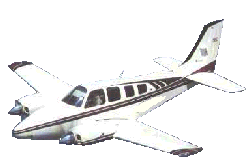|
Miamiís RCC immediately sent out a search helicopter. However, the weather was clear, and there was no trace of the Baron.
Although Jensen reported himself near Miami, no plane or station around there overheard him, much the same as in Spectorís case with Nassau. Only 3 planes heard him, but all of them near Bermuda.
Was he lost, and thatís just all there is to it? If that is all, how can one explain the final bit of mystery in this incident?
At 8:05 that night South Caicos Island Airport, the island that lies halfway between San Juan, PR., and Miami, heard a voice over the radio request permission to land, stating furthermore, that he was 10 minutes away. The tower controllers described it as a young manís voice, and clearly received the call letters N9027Qó insisting, mind you, they got the call letters correctly.
Not knowing the plane was being searched for, the request seemed routine. They cleared it for landing, yet it never came in. They quickly got on the phone to rescue units. A full search found nothing here as well.
This plane was also carrying an ELT just like the many others. Yet no signal was picked up coming from it indicating it ditched or crashed at sea.
The Coast Guard didnít think that the plane was really ever close to Miami or the Bahamas because all the planes which had heard Jensen were near Bermuda.
Looking in retrospect, it seems every corner of the vast Bermuda Triangle was in some way touched by this mystery. First, the plane took off near San Juanís corner, reported lost in weird atmospheric conditions at Miamiís, yet was overheard by those near Bermuda. The last report call was also from an area which, geographically speaking, almost appears to be the middle of the Bermuda Triangle.
In subsequent investigation the Coast Guard firmly established that the plane had 5 hours of fuel on board. Yet 16 hours after takeoff a routine call came from Jensenó 11 hours after the possible.
|
